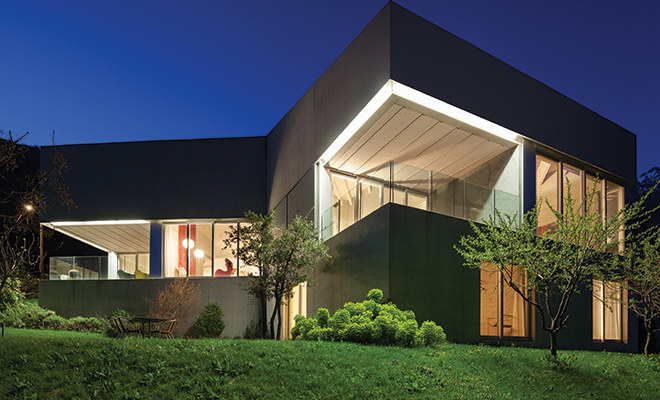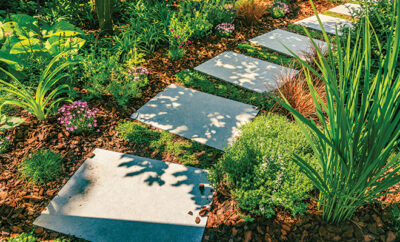
Propelling concrete forward: the push to build regenerative homes
Concrete has not always been viewed as a sustainable building material. The production of cement can be heavy on fossil fuels, and traditional concrete includes mined sand and stone, putting pressure on natural resources.
What do these considerations mean for us when we choose to embark on the route of building our own homes from scratch? Should we dismiss the use of concrete as we explore our building plans?
Not necessarily.
New technology and sustainable initiatives have sprung up to welcome regenerative building efforts in the creation of concrete by recycling of various wastes. Choosing to use recycled resources and materials in the making of concrete can reduce carbon dioxide emissions and decrease the carbon footprint of your home.
CarbonCure, for example, manufactures a technology to recycle carbon dioxide–from the CO2 waste emitted by industrial gas suppliers–to enhance concrete products. By capturing and making use of CO2 waste, carbon dioxide becomes a renewed resource.
CarbonCure is just one example, and there are several initiatives working to recycle various resources beyond carbon dioxide as part of concrete production. If you are looking to build your home from scratch, we recommend you connect with your local architects and builders to seek your greenest options available.
Insulated concrete forms, known in the industry as ICFs, offer an advantage during the construction process. Several elements of the wall assembly, which typically are built out by different trades, are completed in one step. Steel-reinforced concrete is the primary structural element; insulating foam panels provide an R value up to R-30. The monolithic wall serves as an air barrier, while the low permeability of the form acts as a vapor retarder. Some ICFs also contain furring strips, so the homeowner can attach directly to the ICF.
Terri Schlichenmeyer is planning to build a concrete home with her partner in Wisconsin. Concrete homes are not new, and Terri had been hearing about the concept for a while when she and her significant other began considering the materials to build their future home. While they considered alternative materials, they always seemed to find their way back to the benefits of concrete. They decided that, for them, going concrete was a no-brainer.
Their reasoning, Terri said, was inspired in part by the return on their investment. While concrete homes may cost more up front–although due to state energy codes the numbers seem to be leveling out–they are known to save in the long run due to lower lifecycle, utility and maintenance costs. For example, due to insulation values and tighter construction, heating and cooling costs tend to be lower. Insurance rates also tend to be lower as the walls are considered to be more resistant against the effects of nature, such as high winds. Concrete walls also make it harder for pests and rodents to enter the home, and because of the thick walls, the homes are more noise resistant.
Beyond return on investment, Terri and her partner were also attracted to the sustainability that concrete homes can afford with maximized energy performance. The couple envisions taking their sustainable efforts further. Their plan is to incorporate countertops that will be made from recycled glass, which Terri noted was comparable in cost to some alternatives and cheaper than others. The countertop will be made locally in LaCrosse. “It was such a special thing to know where the countertop came from,” Terri said.
The couple does not plan to rush the construction, and they are taking the entire year of 2017 to make preparations before breaking ground in the spring of 2018. “We gave ourselves the gift of time, because we want to be informed consumers,” Terri shared.
Their preparations will include meeting with an architect and making choices for interior elements, such as tiles, carpets and fireplaces.
Concrete homes are not always immediately recognizable, as both their interiors and exteriors can still be covered with most standard finishing models, allowing diversity in your pick of architectural style. Terri and her partner remain undecided for their exterior finishing, but for their interior they have chosen standard options such as sheetrock and paint for the walls, and tile and carpet for the flooring.
There appears to be a common thread among concrete home owners, Terri said. The people that her partner knows speak highly of their experiences. Beyond the will to be informed consumers, this will be her first home with her partner and, she noted, will likely be the last home of their lives.
Time is something they can afford. ■
Sources: Heath Shawley, owner of Hrs Construction LLC, carboncure.com, cement.org, concretenetwork.com, greenlivingideas.com and rewardwalls.com.







